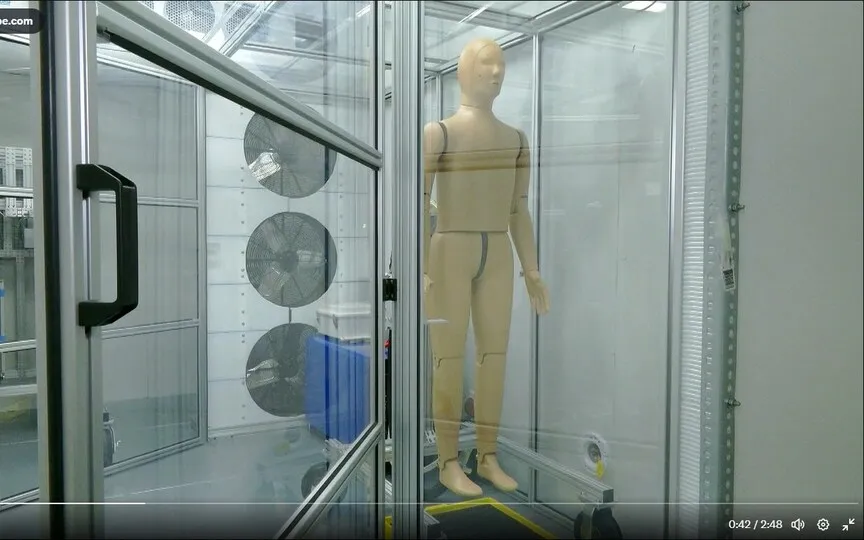Scientists Introduce Revolutionary Sweating, Breathing, and Shivering Robot
A revolutionary breakthrough has been achieved by scientists who have successfully designed a robot that can walk, shiver and sweat. The innovative robot, named ANDI, has been created by Thermetrics, a US-based company, in collaboration with Arizona State University. ANDI is being recognized as the first-ever robot that can sweat.
According to Arizona State University assistant professor Konrad Rykaczewski, “ANDI sweats, produces heat, vibrates, walks and breathes.” ANDI, also known as “heat mueni”, is designed to study the effects of heat and extreme temperatures on the human body. It has 35 individually controlled surfaces with pores similar to those of the human body, allowing it to adapt to different temperatures.
Rykaczewski explains: “This thermal manikin allows us to simulate the conditions and observe how quickly the core temperature rises.” The goal is to better understand how heat affects the human body, so that we can design solutions for it effectively. This research is crucial because although there is a lot of information available about extreme heat, there is still much to learn.
Jenni Vanos, an assistant professor at Arizona State University, emphasizes the importance of ANDI’s outdoor abilities. He says, “We can’t expose people to dangerous extreme heat for testing purposes. However, there are situations in places like Phoenix where people die from heat and we don’t fully understand the reasons behind it. ANDI can help us unravel these mysteries.”
Arizona State University researchers plan to use ANDI to test the effects of extreme temperatures on different age groups and body types in Phoenix, an area known for its hot climate.
Ankit Joshi, a university researcher and ANDI’s lead operator, explains: “We can feed different models from different body mass indexes (BMI), age groups and medical conditions into ANDI.” This tailored approach allows them to account for variations in thermoregulation between individuals, such as those with diabetes or other medical conditions.
ANDI represents an exciting development in robotics and scientific research, as it opens up new opportunities to study the effect of heat on the human body in a safe and controlled manner. With the help of ANDI, scientists hope to gain valuable insights that will help develop effective strategies to address the challenges posed by extreme temperatures.




